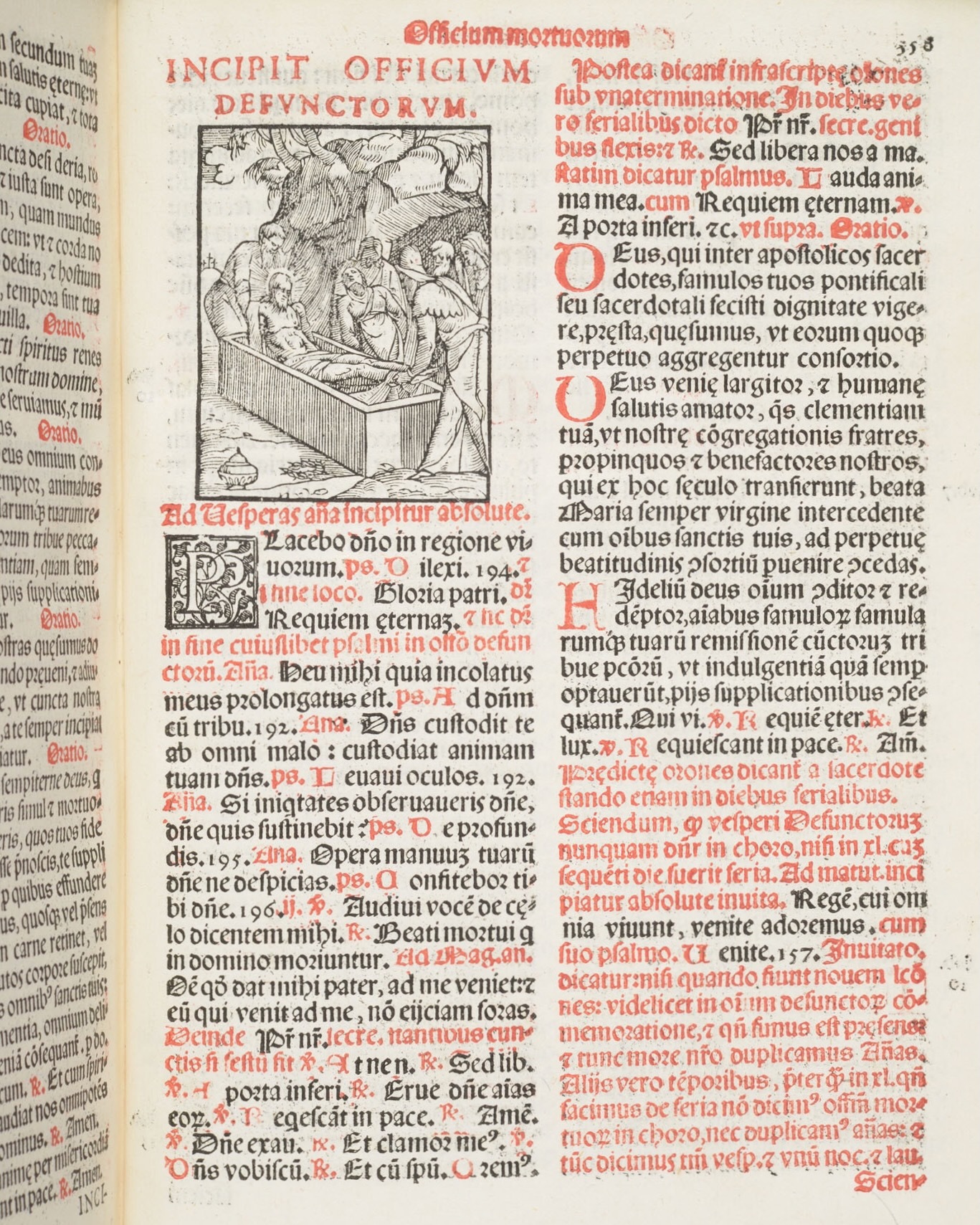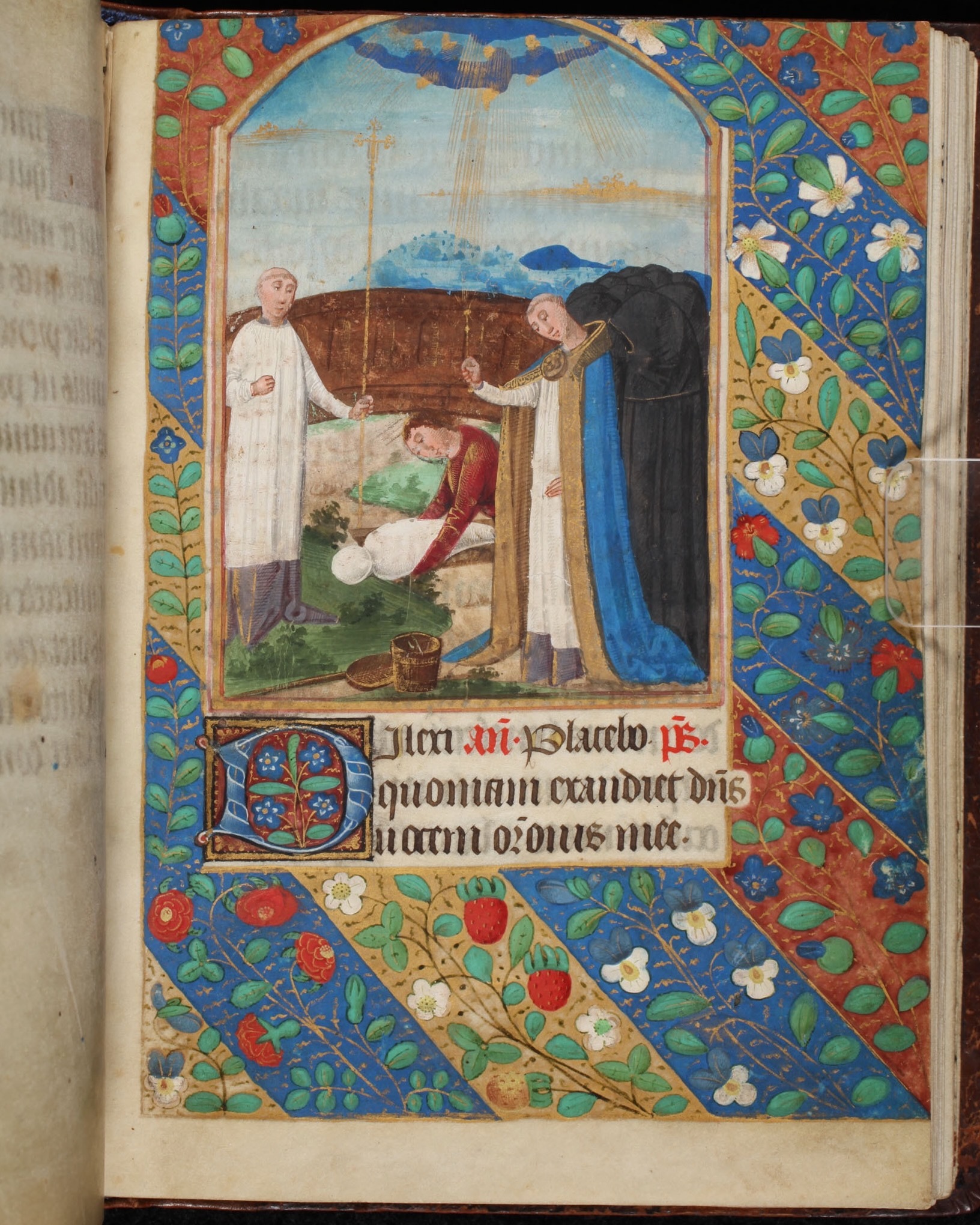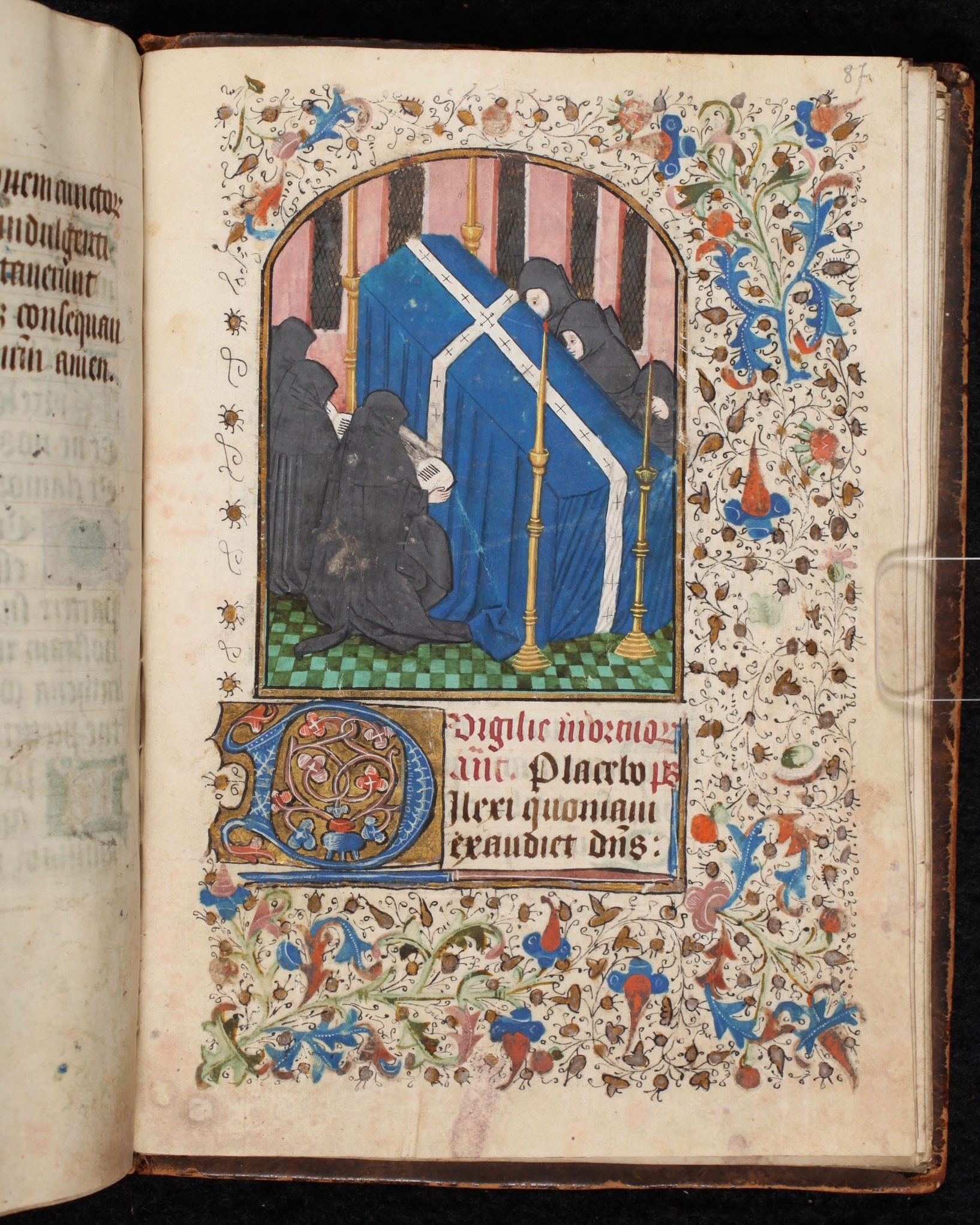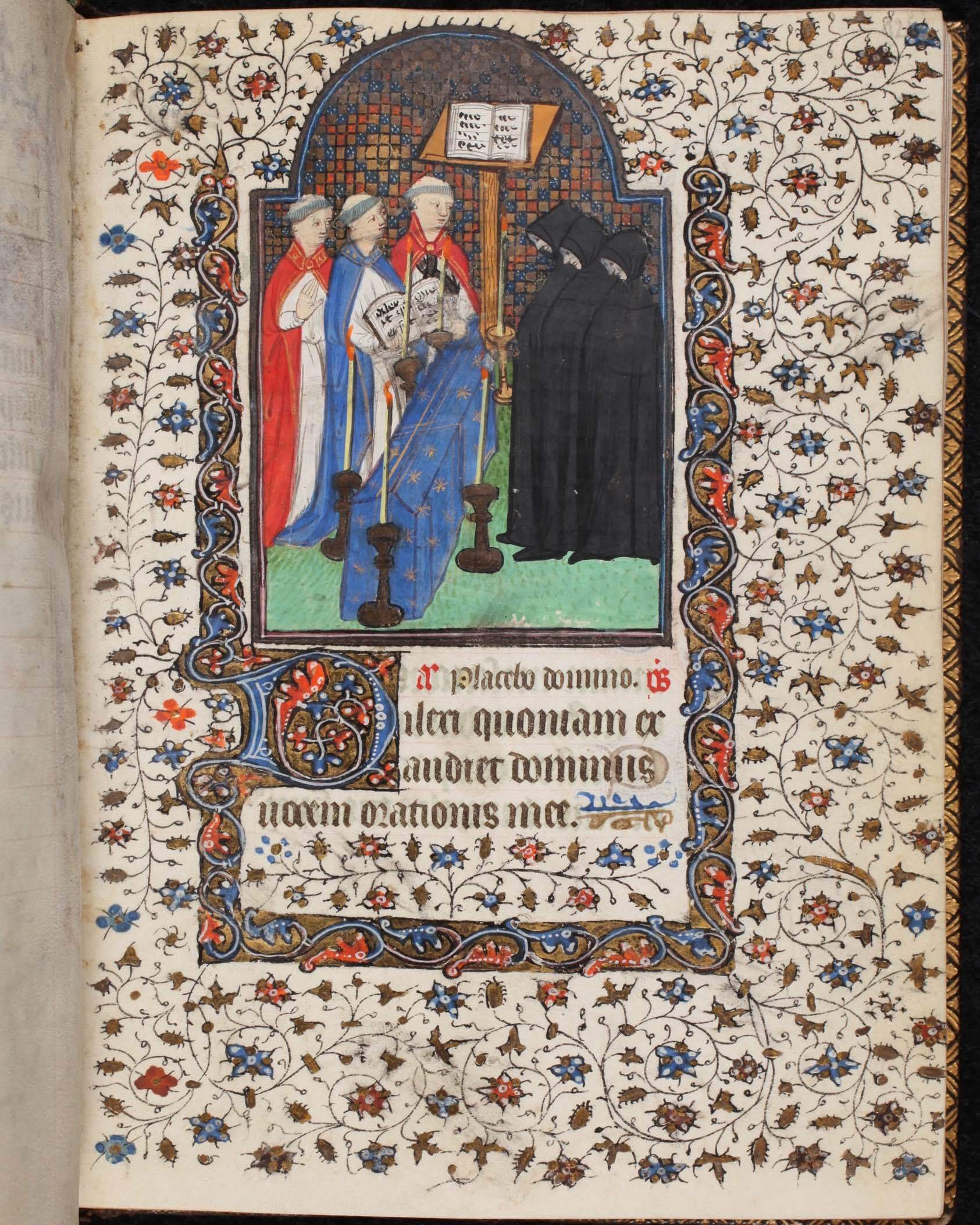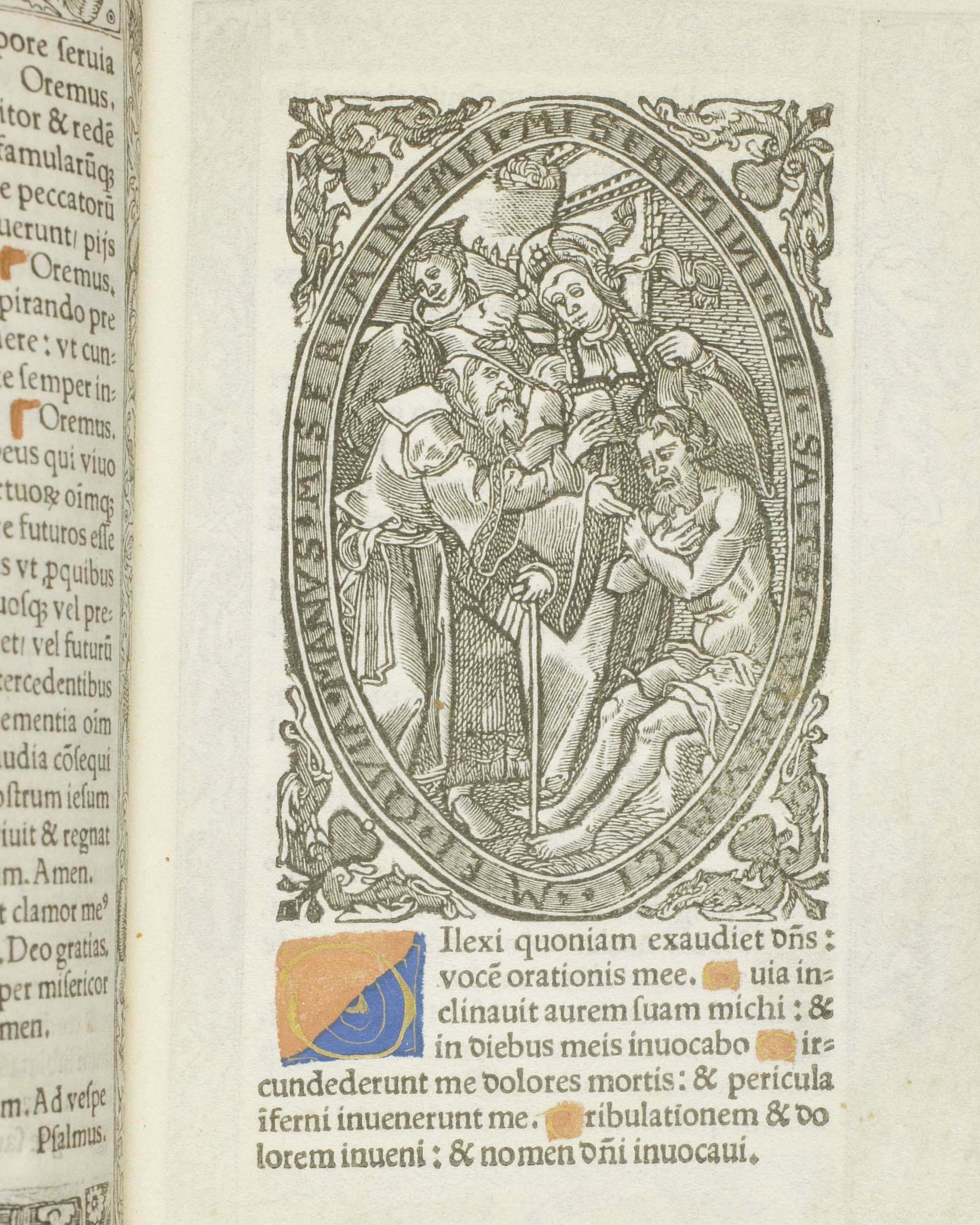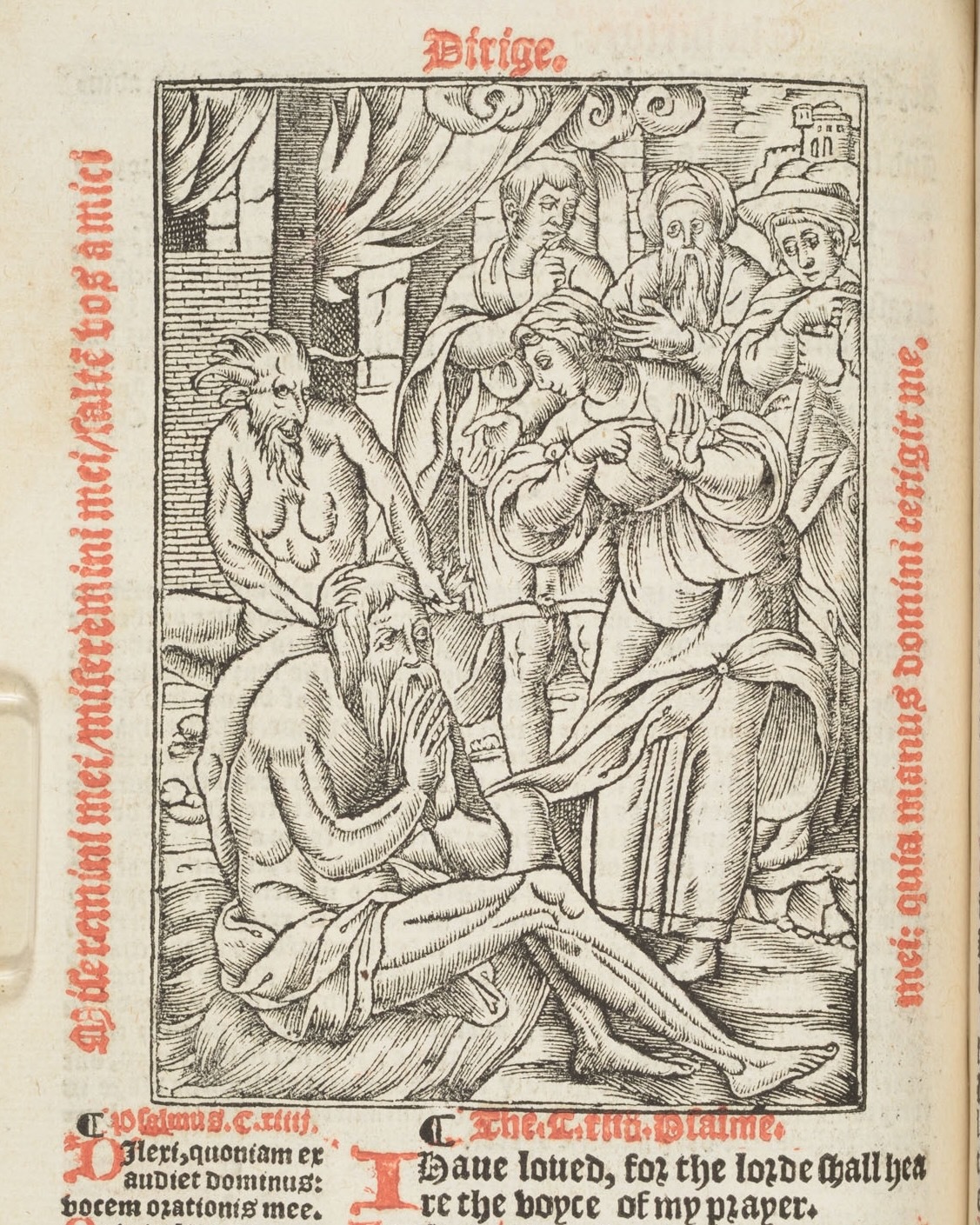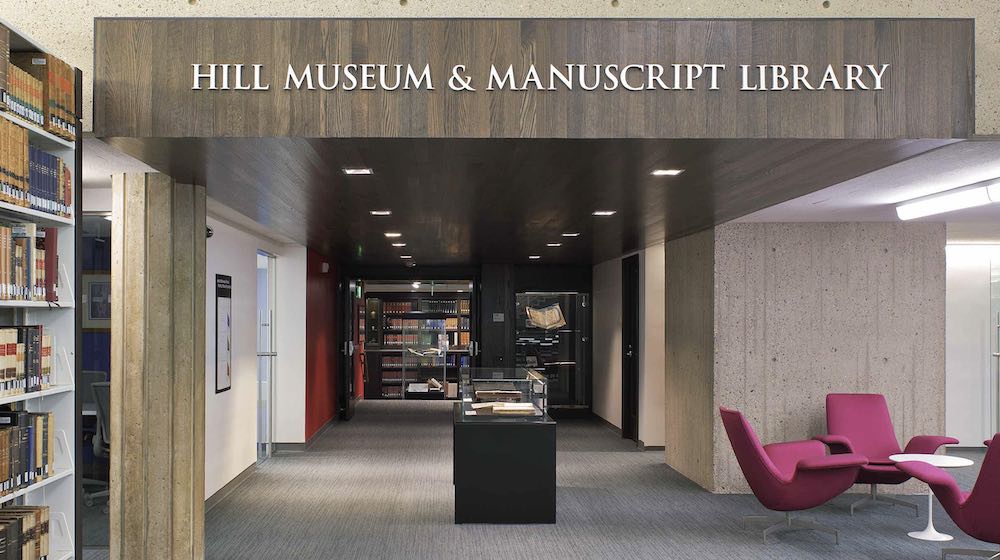Gone, But Not Forgotten: The Office For The Dead In Books Of Hours
Gone, but not Forgotten: the Office for the Dead in Books of Hours
This story is part of an ongoing series of editorials in which HMML curators and catalogers examine how specific themes appear across HMML’s digital collections. Examining the theme of “Death & Mourning,” Dr. Matthew Z. Heintzelman shares this story from HMML's Special Collections.
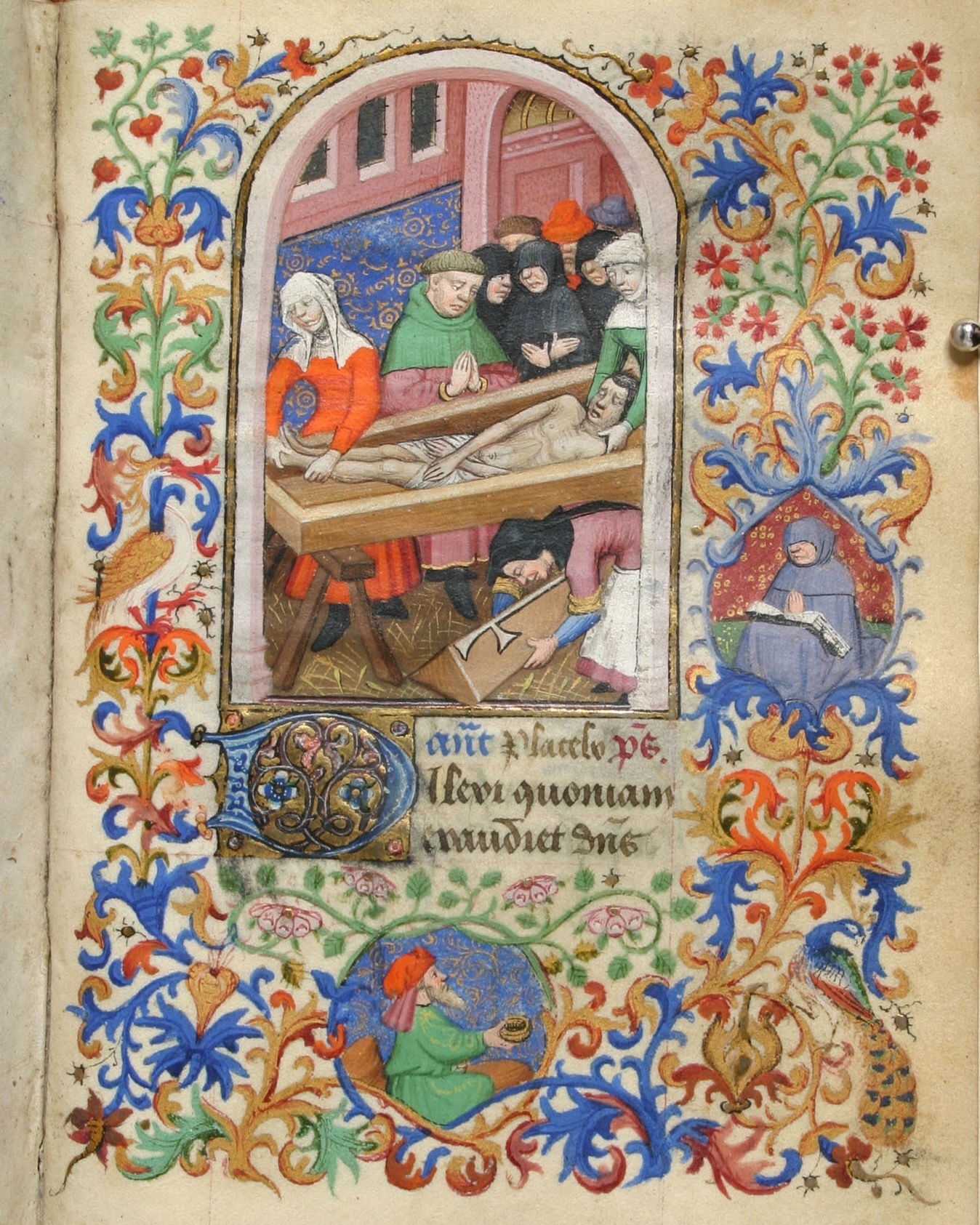
A choir of cowled monks around a shrouded casket, a body being laid into a coffin, a smiling skeletal figure, an old man sitting on a dung heap…(wait, “an old man sitting on a dung heap”?)
Death and mourning have long played a formative and provocative role in manuscript culture. Remembering those who came before us and coping with loss and fear of the unknown are central concerns in our human experience and identity. For many late medieval Christians, one way to address such fear and uncertainty was to pray the Office for the Dead (in Latin, the Officium defunctorum), an important chapter in the handy books of hours.
Books of hours were among the most popular manuscripts in the later Middle Ages and retained their popularity as printed works into the early 16th century. A book of hours was a personal prayer book that emulated the breviaries used by religious orders. Books of hours would also often include other “offices” (such as the central text, the Little Office of the Virgin Mary) and selections from the Psalms, mixed with other readings and prayers for specific occasions or remembrances—for example, the Office of the Holy Cross, the Office of the Holy Spirit, and the Office for the Dead.
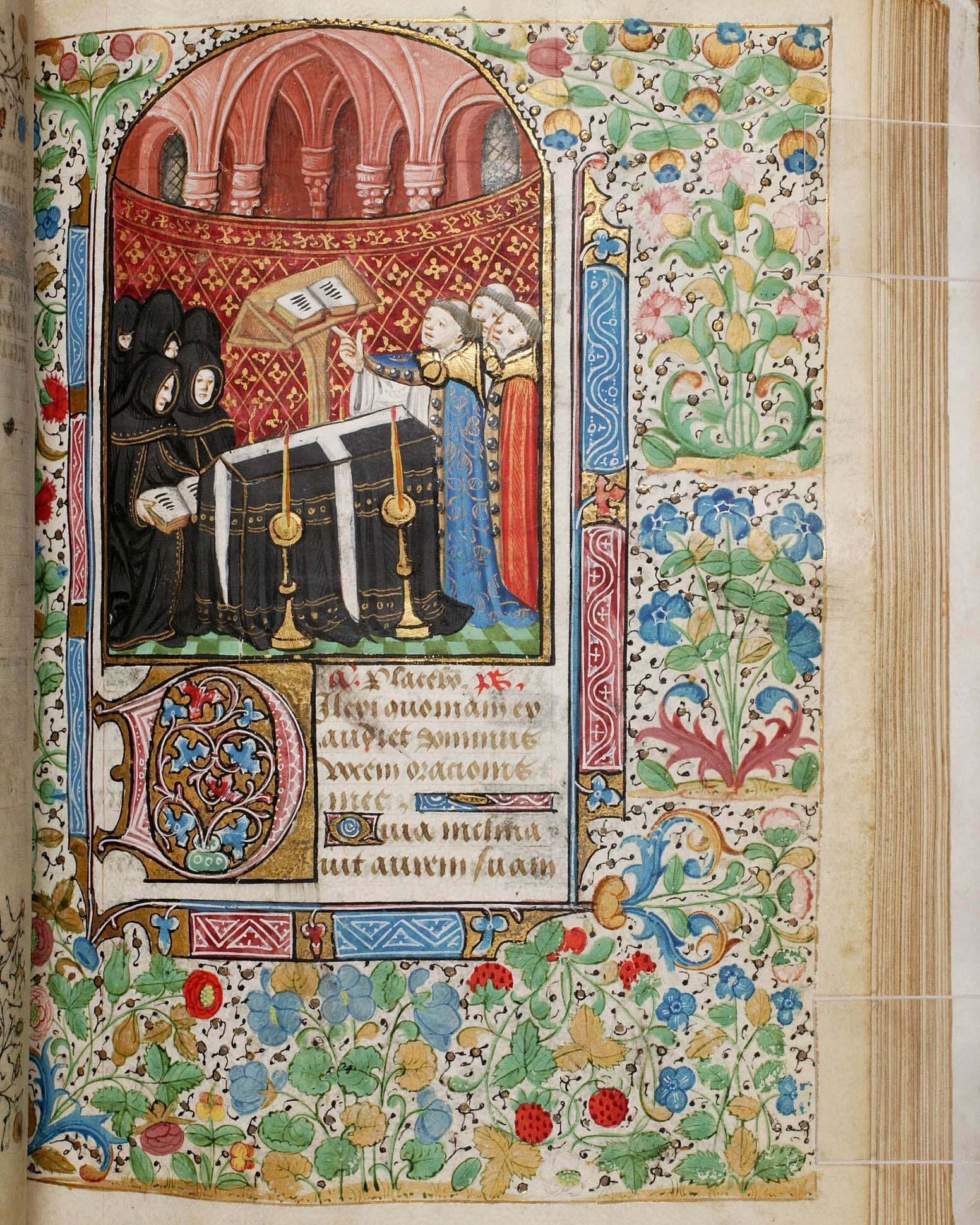
The Office for the Dead often appeared near or at the end of a book of hours and included prayers and readings for three times of the day: a service of evening prayer (vespers) for the night before and services of morning prayer (matins and lauds) for the morning of a funeral or special remembrance. The Office itself is not the text of the funeral rite or funeral Mass, but rather a selection of psalms and readings (especially from the Book of Job) that provided consolation to the living.
The set for vespers includes six psalm texts and the Magnificat (the Canticle of Mary, found in the Gospel of Luke), along with other prayers and invocations, starting with Psalm 116 (or Psalm 114 in the earlier Roman Catholic numbering):
“Dilexi, quoniam exaudiet Dominus: vocem orationis meae. Quia inclinavit aurem suam mihi: et in diebus meis invocabo.”
(Psalm 116 (114): 1–2 (Latin Vulgate))“I love the Lord because he has heard my voice and my supplications. Because he inclined his ear to me, therefore I will call on him as long as I live.”
(Translation from the New Revised Standard Version)
The readings for matins includes seven selections from the Book of Job, whose story of painful loss and glorious restoration parallels Christian expectations of complete loss in death and restoration in the afterlife.
As with other sections within books of hours, the text of the Office for the Dead was usually introduced with an appropriate miniature, often depicting monks singing around a coffin (see HMML 00003), the preparation of the body for burial (HMML 00004), or even of Job on the dung heap being tormented by his friends and wife (HMML 00534).
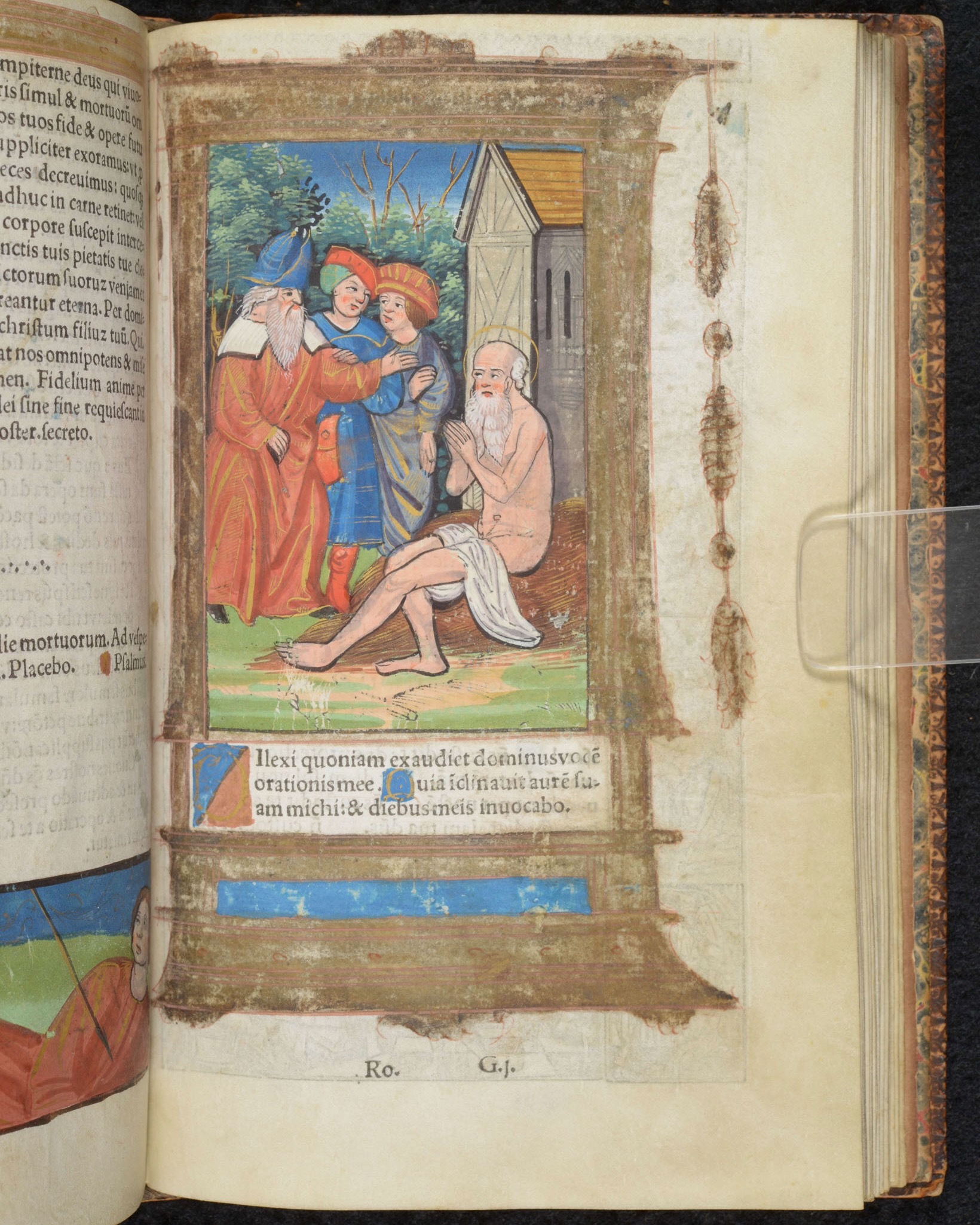
There were many ways that the Office of the Dead was introduced in late medieval prayer books. Here is a selection from the manuscripts and early printed books in the HMML Rare Book and Manuscript Collection and in Saint John’s University’s Rare Books and Arca Artium collections.
